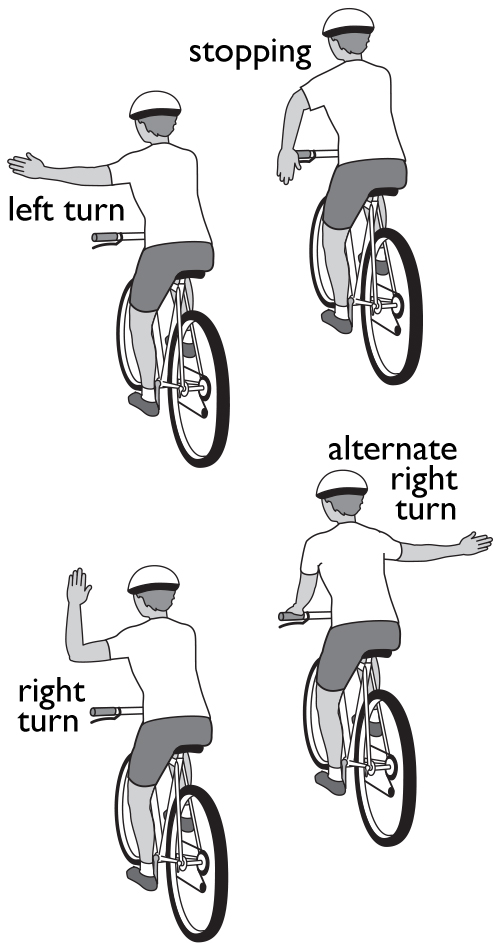
Cycling Safely in Kelowna
Cycling safely requires you to have a bicycle that's in good working condition, road and traffic sense, bike handling skills, and the confidence to navigate traffic when dedicated cycling paths aren't available. If you're new to cycling or you've returned after a long break, the below resources offer a good starting point for developing the knowledge and skills you need to cycle safely in Kelowna.
Pre-Ride Bike Safety Check (ABC Quick Check)
Air
Most of our team advocate for checking your tire pressure before every ride. It makes sense - riding with the right tire pressure ensures you're rolling efficiently and reduces the risk of getting a flat. And it takes no time at all if you have a floor pump.
If not before every ride, check at least once every two weeks - even if you haven't ridden in between.
Brakes
It's best to check that your brakes are working well before you need them. Grab your front and rear brakes and roll your bike forward before you jump on. Once you've confirmed they're engaging, jump on and ride with confidence.
You also need to service your brakes or replace your pads routinely. It can be required as often as twice per season if you're riding two or more times weekly.
Chain
Regularly lubing your chain makes changing gears smooth and comfortable. Our team recommends lubing your chain as often as once a week if you're logging lots of kms.
If you hear a sound similar to birds chirping coming from your drive train, you've waited too long.
Quick-Release
Checking your quick-release axles (if you have them) before each bike ride is vital for safety, as loose axles can lead to accidents and loss of control. Properly tightened axles ensure wheel stability, prevent damage, and provide peace of mind during rides.
To check your axel, wiggle your wheel and check for any side-to-side play. If it moves at all, be sure to tighten it.
Check
Finally, check your bike over for any loose components or accessories. Handlebars are a common culprit here (if you've adjusted them).
Performing the ABC Quick Check each time you ride (or at the very least weekly) can help to prevent injury and help keep you rolling smoothly and safely.
An added bonus is that it keeps you familiar with the feel of different parts on your bicycle. So you'll be in a better place to notice if something isn't quite right - or when it's time for a tune up.
ICBC's Cycling Safely Suggestions
ICBC's website offers the following simple tips for riding safely:
- Start at the top. Wearing an approved bicycle helmet that meets safety standards is the law in B.C. and you could be fined for not wearing one. Focus on how it fits: the helmet should sit level on your head (not tilted back) with the front edge one inch or less above your eyebrows to protect your forehead and should be snug so it can't roll off of your head when the chin strap is secured.
- Follow the rules of the road. Make sure you obey all traffic signs and signals and adhere to the rules of the road.
- Bike lanes are best. Use designated bike routes whenever possible – they're safer and reduce conflicts with vehicle traffic. Check your local municipality's website for designated bike routes. (Here's a link to Kelowna's bike routes!)
- Shoulder check. Use hand signals and shoulder check in advance before taking any turns. Remember, drivers sometimes fail to yield right-of-way.
- Reflect on safety. Be extra visible with reflective gear on your bicycle pedals and wheels.
- Use caution around parked vehicles. Be aware of people in vehicles as well as taxis to avoid getting hit by an opening door. Try to keep at least one metre away from parked vehicles.
Read the BC Cycling Coalition's Book: Bike Sense
We particularly enjoyed the following resources:
What to Wear
Cycling Skills
Cycling Skills and Safe Practices
We have free copies of the book available in store (while stock lasts)

